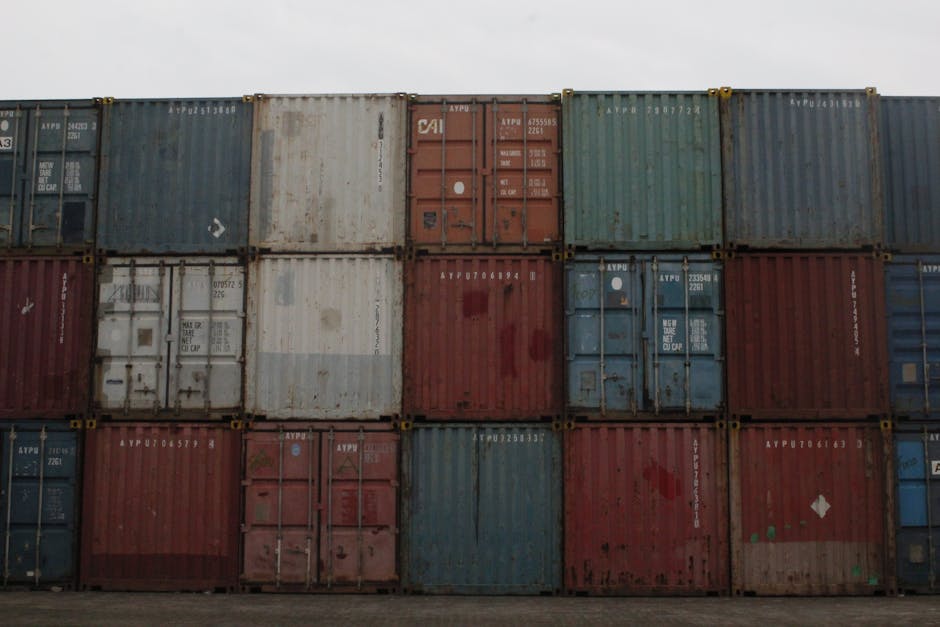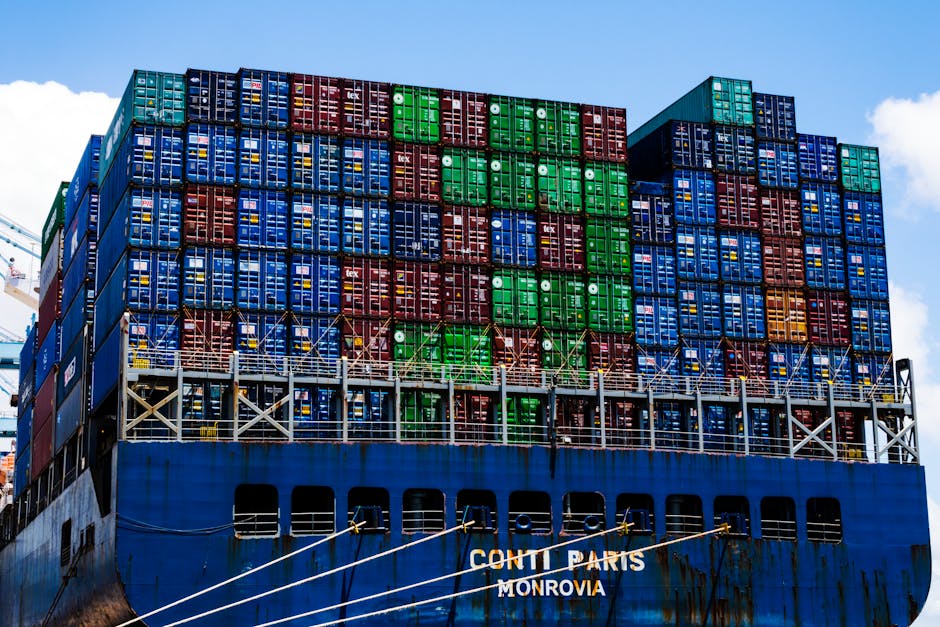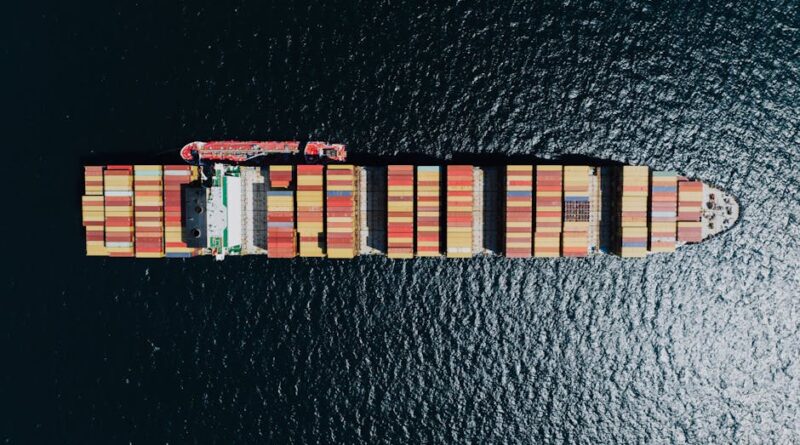Navigating Challenges in Global Supply Chains
Did you know that about 80% of the goods we use daily are affected by global supply chains? From the food we eat to the gadgets we use, these networks keep the world running. But what happens when things go wrong? Lets explore the challenges in global supply chains and how businesses can overcome them.
What Are Global Supply Chains?

Global supply chains refer to the systems that companies use to source materials, produce goods, and deliver them to customers worldwide. Think of it as a web connecting manufacturers, suppliers, and consumers across the globe.
For example, a smartphone might be designed in the U.S., assembled in China, and sold in Europe. This interconnectedness makes it possible to enjoy products from around the world but also introduces potential hurdles.
Why Do Global Supply Chains Face Challenges?

Several factors can cause hiccups in these systems. Some of the main challenges include:
- Natural Disasters: Earthquakes, floods, or hurricanes can disrupt production.
- Political Instability: Changes in government or conflict can halt trade.
- Economic Fluctuations: Currency changes can make it expensive to buy materials.
- Pandemics: Events like COVID-19 showed how quickly supply chains can be affected.
Each challenge can lead to delays, increased costs, and ultimately unsatisfied customers. So, how can companies navigate these issues?
How Do Companies Overcome Supply Chain Challenges?

Businesses have developed various strategies to tackle supply chain challenges. Here are some effective methods:
- Diverse Sourcing: By sourcing materials from multiple suppliers, companies can reduce risk. If one supplier fails, others can step in.
- Technology Integration: Using technology helps streamline operations. For instance, tracking software can alert companies to potential delays.
- Building Strong Relationships: Maintaining good relationships with suppliers can lead to better communication and support during tough times.
- Adapting Quickly: Companies that can pivot their strategies fast often weather storms better than those that don’t.
These strategies are not just for big corporations. Small businesses can also benefit from them. So, what should you consider when planning your supply chain?
What Should You Consider in Your Supply Chain Strategy?

When creating a supply chain strategy, consider the following:
- Location: Choose suppliers and manufacturers close to your market. This reduces shipping time and costs.
- Flexibility: Ensure your supply chain can adapt to changes. This could mean having backup suppliers ready.
- Transparency: Know where your materials come from. This builds trust with customers and helps identify potential issues sooner.
Planning for flexibility and transparency not only helps during a crisis but also builds a more resilient supply chain overall.
How Do Natural Disasters Impact Supply Chains?
Natural disasters can strike anytime, leaving supply chains in chaos. For example, after Hurricane Katrina, many businesses had to shut down temporarily due to damage, leading to significant delays in product availability.
To prepare for such events, companies should:
- Develop Contingency Plans: Have a plan in place for how to respond to natural disasters.
- Invest in Insurance: Insurance can protect against financial losses from interruptions.
- Conduct Risk Assessments: Regularly review potential risks in your supply chain.
By taking these steps, businesses can minimize the impact of natural disasters on their supply chains.
How Does Political Instability Affect Supply Chains?
Political unrest can drastically affect supply chains. For example, during the Arab Spring, many businesses faced shutdowns and supply disruptions in affected countries.
Here are some ways to mitigate risks related to political instability:
- Stay Informed: Monitor political situations in regions where you source materials or manufacture products.
- Diversify Your Locations: don’t rely on one country or region for production. Spread your operations across multiple areas.
- Engage Local Experts: Work with local partners who understand the political climate.
These strategies can help businesses navigate uncertain political waters.
What Role Does Technology Play in Supply Chain Management?
Technology is a game-changer in supply chain management. From tracking shipments to forecasting demand, technology streamlines processes and increases efficiency.
Some key technologies include:
- Blockchain: This technology allows for secure and transparent tracking of materials.
- Artificial Intelligence: AI helps predict demand and optimize routes for delivery.
- IoT Devices: The Internet of Things connects devices to track inventory in real-time.
Using these technologies can improve visibility and help companies respond quickly to challenges.
How Do Economic Changes Impact Supply Chains?
Changes in the economy, such as inflation or currency fluctuations, can affect supply chains significantly. When a currency weakens, it can drive up costs for imported materials. For instance, if the dollar weakens against the euro, U.S. companies importing European goods may face higher prices.
To combat these economic challenges:
- Monitor Financial Markets: Keeping an eye on currency trends can help anticipate changes.
- Lock in Prices: Consider contracts that fix prices for materials over time.
- Build Financial Reserves: Having savings can cushion against unexpected costs.
By being proactive, companies can better manage the impact of economic shifts.
What Can Businesses Learn from the COVID-19 Pandemic?
The COVID-19 pandemic revealed many weaknesses in global supply chains. Lockdowns halted production, and shortages became common. However, businesses also found ways to adapt.
Key lessons from the pandemic include:
- Flexibility is Key: Companies that could quickly shift operations fared better.
- Local Sourcing: Businesses realized the benefits of sourcing materials closer to home.
- Digital Transformation: Companies accelerated their use of technology to stay connected and efficient.
These insights provide a roadmap for future resilience in supply chain management.
How Can Small Businesses Navigate Supply Chain Challenges?
Small businesses may face unique challenges in global supply chains. However, they can still thrive by implementing smart strategies:
- Community Engagement: Build relationships with local suppliers to strengthen your network.
- Leverage E-commerce: Selling online can broaden your market reach and reduce dependency on local sales.
- Stay Agile: Be ready to pivot your business model as needed.
By being proactive and adaptable, small businesses can successfully navigate supply chain hurdles.
Conclusion: What Are the Key Takeaways?
Navigating challenges in global supply chains is tough but manageable. Companies can build resilient supply chains by:
- Diversifying suppliers and locations
- Investing in technology
- Staying informed about global events
- Learning from past crises
These strategies can lead to stronger, more efficient supply chains, ensuring that businesses remain competitive in a rapidly changing world.
For more on supply chain strategies, check out this article on [Supply Chain Management Best Practices](https://www.supplychain247.com/article/supply_chain_management_best_practices).
By understanding the challenges and implementing these strategies, businesses can not only survive but thrive in the complex world of global supply chains.



